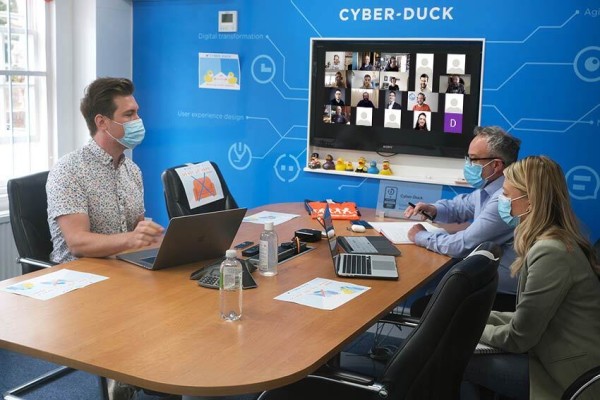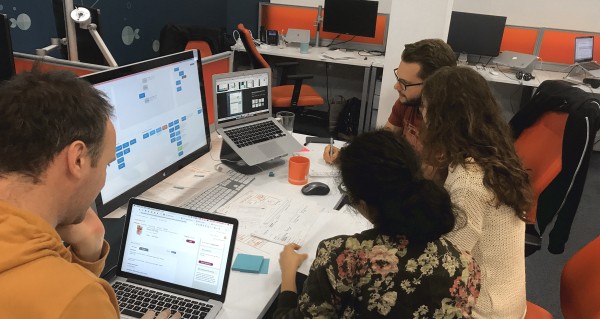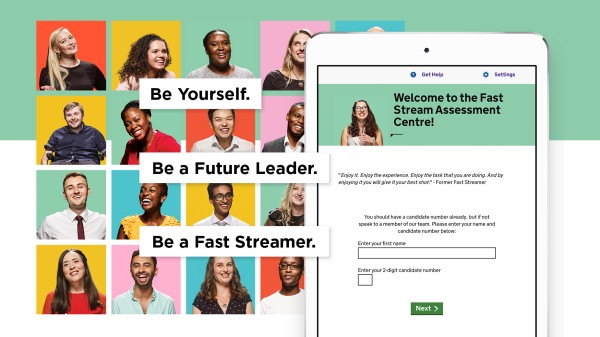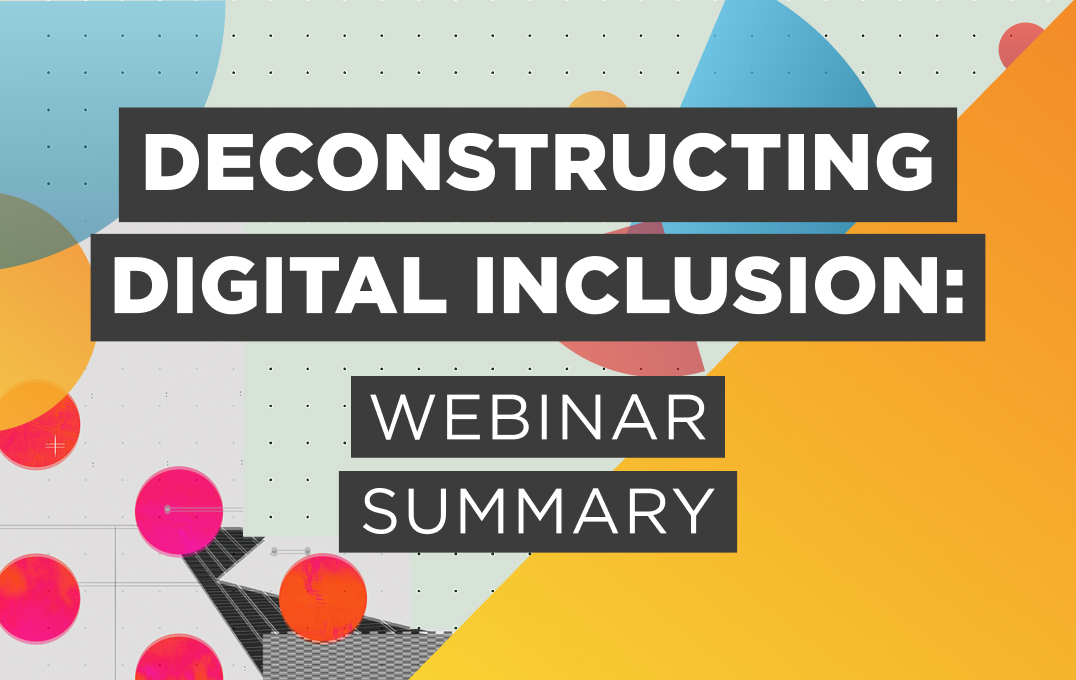Since the pandemic, our reliance on digital technologies and the Internet has grown massively. Whether for work, education, banking, grocery shopping, or socialising. More than 95% of the UK population is now online, with 55% saying their Internet usage increased during the pandemic.
Yet at the same time, people who are digitally excluded and face significant barriers when it comes to navigating the web and accessing services online, now feel more disconnected than ever before as a result of the digitalisation accelerated by COVID-19. Something that we all must help tackle.
Earlier this year, our Chief Growth Officer Siji Onabanjo spoke with Cyber-Duck’s new Diversity and Accessibility Lead, Yahye Siyad, for our Fireside Chat Webinar: Deconstructing Digital Inclusion. During their conversation they explored:
- What exactly is Digital Inclusion?
- How does disability, age and lack of essential digital skills contribute to being digitally excluded
- Deconstructing the 5 key principles of Digital Inclusion: affordability, connectivity, literacy, accessibility, and safety
- How the perception of Digital Inclusion changed during the pandemic
- Whether the current global policies and local legislation go far enough to supporting Digital Inclusion
- How user testing with a more diverse audience can bring you great insights and improve results
- And much, much more
You can watch a quick introduction to the webinar here.
The webinar is available in full on our website, or read on for our key insights.
What is Digital Inclusion?
By Digital Inclusion we mean the enablement of all individuals, regardless of age, disability, economic status or digital skills, to use digital technologies and the Internet effectively. This involves taking action to lower digital barriers, tackle social exclusion and support improvements to digital infrastructure, so that the benefits of digital are available to all.
Understanding the core principles of Digital Inclusion
Within web design and development, there’s often a misconception that Digital Inclusion relates solely to accessibility and the terms are often mistakenly used interchangeably. As Yahye explained during the webinar, this is just one of five core principles for Digital Inclusion, which are:
- Affordability: is the individual or household able to afford to go online? This means both being able to afford the necessary internet-enabled devices as well as the cost of connectivity, whether by broadband or mobile data
- Connectivity: having the correct infrastructure in place so that individuals, organisations and households have access to a reliable Internet connection. This has been increasingly important during the pandemic, with more people working from home and home-schooling
- Literacy: do individuals have the necessary literacy and digital skills to properly use online services? This doesn’t necessarily mean you have to be a ‘tech-whizz’, but at least have the basic digital skills to understand, navigate, make decisions on what to do online
- Accessibility: have websites and digital platforms been built following web accessibility best practices? This is essential for users with disabilities who use assistive technology (such as screen readers) but has benefits for all users. An example being, captioned videos being useful for users in public spaces and without headphones
- Safety: all users need to feel safe and secure online. Particularly in line with increases in phishing and scams during the pandemic
So, in Yahye’s word’s, "Digital Inclusion is really a spectrum”. Anyone of these five core principles can affect the way people interact with technology and online services. And all of them contribute to the digital divide.
How has the pandemic affected the digital divide?
The pandemic has shone a stark spotlight on the digital divide.

Cyber-Duck meeting the pandemic challenge with hybrid meetings
For example, within the UK we saw increased attention given to children from low-income households who often don’t have access to digital devices and the Internet. According to an Ofcom report from 2020, up to 1.8m children did not have access to a laptop, desktop, or tablet at home at the start of the pandemic.
As well as this, many people who previously didn’t rely on technology for work found their job potentially under threat as the world quickly shifted online. As AgeUK found, 42% of over-75s in England were still offline at the start of the pandemic.
So, during this rapid change of pace, many people were being left behind.
There were Government initiatives to help, such as investing in digital skills boot camps and donating equipment to schools. However, as Yahye explained, there still needs to be a more significant change in mindset when it comes to the Internet. With the Internet being essential to modern life, it should be provided as a basic public utility – as we have with electricity, gas, water, and sewage.
Overall, there has been a lot learned about the digital divide over the last two years. There is a greater understanding of just how essential the Internet is to everyone (and this will continue to increase). As Yahye states, “we cannot have accessibility or inclusion as a last-minute thought or something that we do as an add-on”.
Is legislation helping to influence change?
A key area that Siji and Yahye discussed, was that government policies and legislation are one of the quickest ways to influence change. Often the fear of being sued or ‘called out’ can have a positive impact.
There is a global commitment toward inclusion that acknowledges digital, which is called the United Nations Convention on the Rights of Persons with Disabilities (UNCRPD). The purpose of this is to promote, protect and ensure the full and equal enjoyment of all human rights and fundamental freedoms for disabled people. And Article Nine and Twenty-One in the convention relate to making information and infrastructures, including digital, as accessible as possible. Great.
However, as Yahye explained, while there is a clear statement of intent toward Digital Inclusion, there isn’t any actual related global legislation to enforce it. The actual laws that influence and encourage change are managed on a country-by-country basis.
Within the UK, it wasn’t until late 2018 that accessibility regulations came into act. These accounted only for public bodies (not private companies) and encourages organisations to follow ‘POUR’ – that content will be ‘perceivable, operable, understandable and robust’. As well as this, a public body must:
- Meet the international WCAG 2.1 AA accessibility standard
- Publish an accessibility statement
As Yahye explained, the right legislation can have a good impact on Digital Inclusion. And whilst the public sector within the UK is adapting, the private sector may still be lagging behind without proper web accessibility legislation and without understanding the huge brand and business advantages it actually brings.
Testing digital products with users.
One of the most common failures when it comes to Digital Inclusion is when organisations start making assumptions.

Our UX team analysing user research
Creating a dialogue with people who are often digitally excluded can be hugely insightful. As Yahye explained, you won’t always have all the answers, so be curious. Ask people questions about how you can help and support them.
Testing your digital products with a variety of users is a great way to shift away from assumptions and tick boxing.
An example that Siji shared during the webinar, was Cyber-Duck’s work on digitalising the Cabinet Office’s Fast Stream and Early Talent programme. For this client, we performed user testing and focus groups with a variety of people from different ethnicities, socioeconomic backgrounds, genders as well as disabled people. We took this opportunity to learn how we could remove barriers and deliver a more inclusive digital product. The result for the client was an increase in conversations from a more diverse range of candidates, with a 27% increase in the success rates of disabled candidates in the original instance of our platform.

Fast Stream Assessment Centre App
(You can read our Cabinet Office Case Study to learn more about the project here).
Summary
With more organisations taking an active role in supporting Digital Inclusion the future is bright. With more organisations taking an active role in supporting Digital Inclusion the future is bright.
What can you do to get started?
- Test your website – in a previous webinar of ours, Frontend Developer Connor Fox provided guidance on how you can perform an initial accessibility audit
- Speak with a diverse range of users – get feedback with a diverse range of people, including older people, disabled people and people who may lack basic digital skills
- Get up to date with legislation, polices and digital guidance – make sure you have a good global understanding of the Equality Act 2010, American Disability Act, The European Accessibility Act and Web Content Accessibility Guidelines before you start
There is still much work to do to help bridge the digital divide and create greater awareness of the value of accessibility. In the first chapter of the 7 Secrets to Digital Success white paper, we look further into the challenges many organisations still have when it comes to delivering accessible, WCAG compliant digital products. As well as the potential legal action that you could face if your website and other digital products continue to be inaccessible.
If you want to know more about delivering inclusive digital experiences, or are interested in conducting a free accessibility and UX audit on your website, please get in touch with us.

